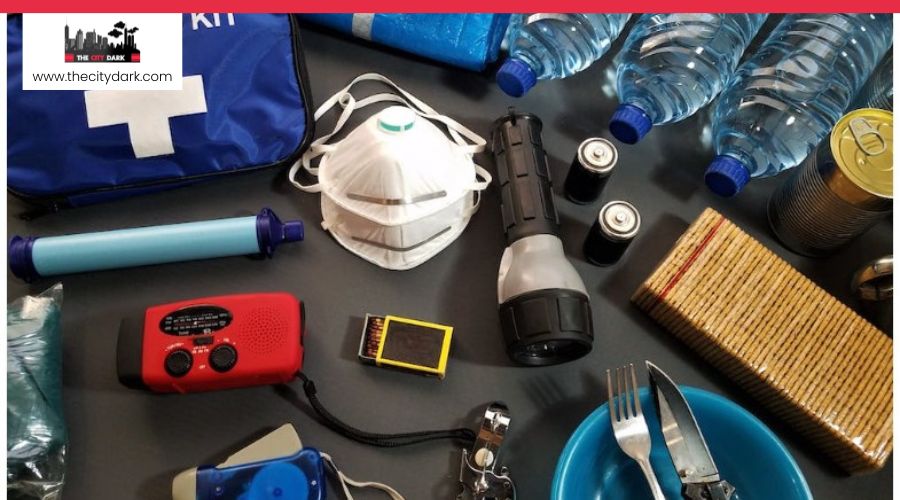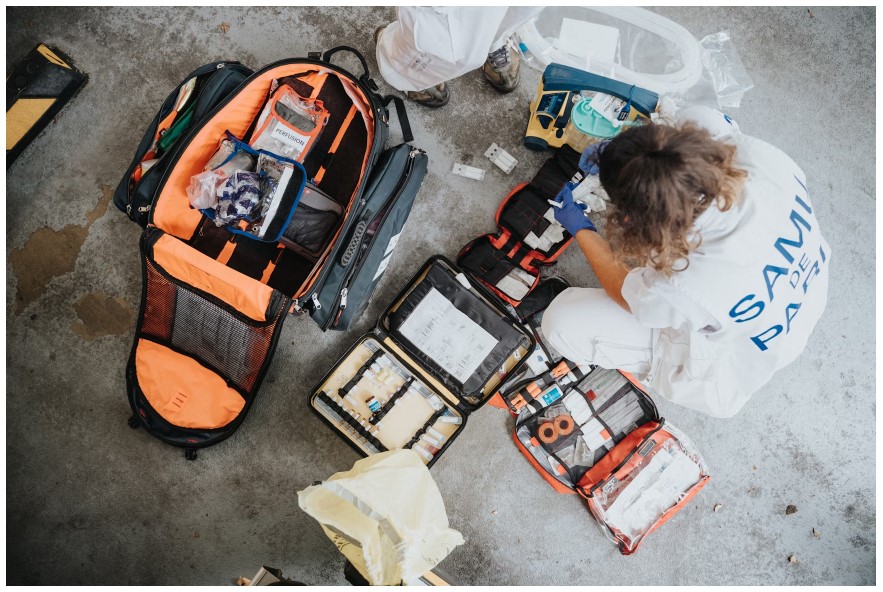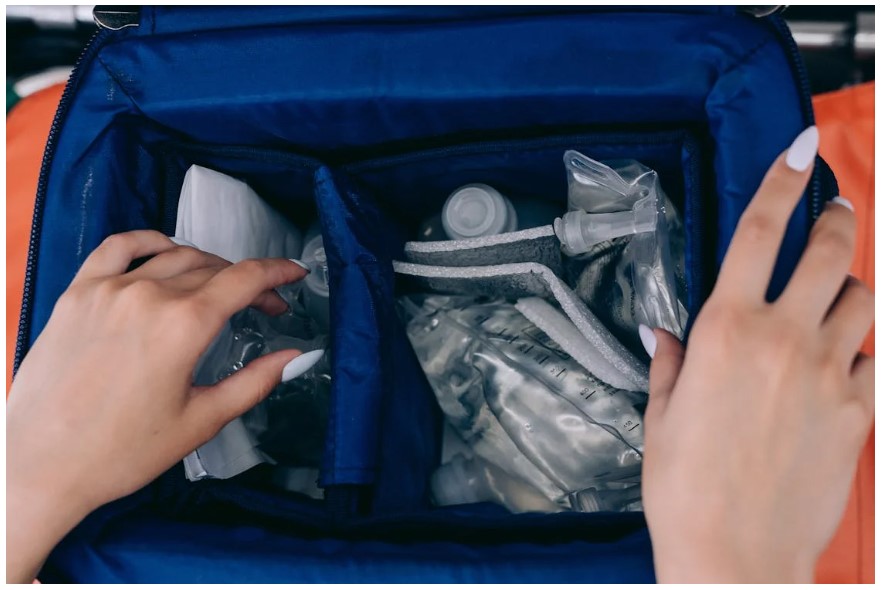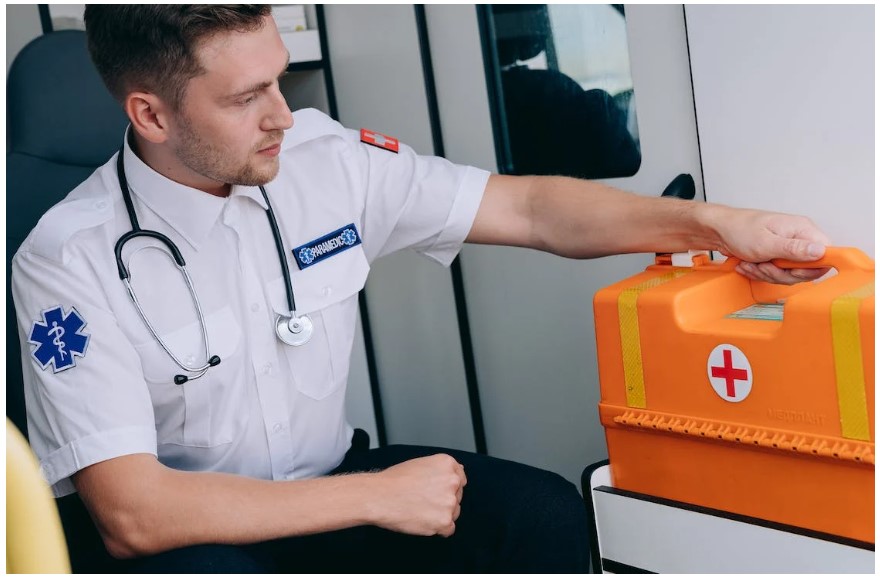Crafting a SHTF first aid and medical kit for long-term survival is akin to building a safety net that’s as comprehensive as it is intricate. You need to consider not just the basics, like bandages and antiseptics, but also delve into the nuances of medical supplies that could mean the difference between life and death.
Learning skills such as CPR, stitching wounds, and properly administering medications are as crucial as the items you pack. You’re also faced with the challenge of selecting the right bag—one that’s durable, accessible, and spacious enough for both essentials and those situation-specific items you may not have thought you’d need.
But there’s more to it than just stacking up on supplies. Let’s explore how you can ensure your kit evolves with you, preparing you for not just the emergencies you can anticipate, but for the unpredictable nature of survival itself.
Key Takeaways
- Assess specific medical needs and conditions to customize the first aid kit.
- Master basic first aid skills and learn wound care techniques for effective medical response.
- Stock the kit with essential medications, gloves, masks, and other necessary items.
- Regularly maintain and update the kit to ensure its readiness and relevance to changing circumstances.
Assessing Your Needs
Before building your first aid kit, it’s crucial to evaluate both your and your family’s specific medical needs and conditions. This step is fundamental in ensuring you’re prepared for any medical emergency. Start by assessing your needs, taking into account the particular medical conditions and allergies that you or your family members have. It’s not just about throwing in a bunch of bandages and hoping for the best. You’re a prepper, and that means being thorough.
Consider your level of medical training. Are you equipped to handle more complex medical emergencies, or should you stick to the basics? This will determine the complexity of the items in your kit. Also, think about the duration of your survival preparations. Are you gearing up for short-term disruptions or long-term survival scenarios? Your first aid kit should reflect this.
Ensure your kit includes essential items like bandages, wound closure materials, and medications that are suitable for your specific needs. It’s not just about having a prepper medical kit; it’s about having one that’s tailored to you and your family. By carefully assessing your needs, you’ll build a first aid kit that truly prepares you for any situation.
Essential Skills Training
Now that you’ve stocked your first aid kit, it’s crucial to master the skills that’ll make you effective in a crisis. Learning basic first aid, wound care techniques, and the basics of herbal medicine ensures you’re prepared for a range of medical scenarios. These skills not only complement your kit but empower you to handle emergencies with confidence.
Basic First Aid Mastery
Gaining proficiency in essential first aid skills, such as CPR, the Heimlich Maneuver, and operating an AED, can save lives in critical situations. It’s crucial that you know how to use these techniques effectively. Alongside mastering these skills, ensuring your first aid kit is stocked with the right medications is a must. Pain meds, topical meds, and specialized meds cater to various medical needs, making your kit versatile and ready for anything. Don’t forget to customize your kit for specific scenarios—whether it’s wounds, fractures, or dental issues.
Including essential items like gloves, masks, and soap ensures you’re prepared for both immediate and long-term survival situations. Your basic first aid mastery isn’t just about having the right supplies; it’s about being ready to respond to any medical need with confidence.
Wound Care Techniques
While you’ve equipped yourself with basic first aid skills and stocked your kit with essential medications, it’s equally vital to master wound care techniques for comprehensive preparedness. Learning how to properly clean wounds is crucial; using clean water and antiseptic solutions can prevent infections. Employing gauze pads to gently dab and cover the wound ensures it’s protected while healing.
Familiarizing yourself with bandaging and suturing methods will help you manage injuries effectively. Recognizing and treating different types of wounds, such as lacerations, puncture wounds, and burns, is critical.
Herbal Medicine Basics
Understanding herbal medicine basics is crucial for anyone looking to enhance their long-term survival skills. In the wake of natural disasters, when access to over-the-counter meds might be limited, knowing how to prepare and administer herbal remedies becomes invaluable. It’s essential to identify herbs and understand their medicinal uses, incorporating them into your comprehensive SHTF first aid and medical kit.
| Herb | Medicinal Use |
|---|---|
| Chamomile | Soothes anxiety, aids sleep |
| Lavender | Antiseptic, relieves pain |
| Peppermint | Eases stomach issues |
| Echinacea | Boosts immune system |
Choosing the Right Bag
When selecting a medical bag for your survival kit, it’s crucial to consider factors like size, shape, weight, and durability to ensure it meets your needs. The right bag first aid kit isn’t just about having all your medical supplies in one place; it’s also about ensuring that your kit is tailored to your specific survival scenario.
Whether you’re prepping for a wet environment, requiring a waterproof medical bag, or something rugged for mountainous terrain, the type of bag you choose matters immensely. Researching recommended medical bags that are easy to carry and can accommodate all your essential supplies is key. Look for a bag with compartments and features that align with your requirements.
For instance, if you’re likely to move around a lot, a compact, lightweight bag that’s still tough enough to withstand harsh conditions is ideal. It’s all about finding that perfect balance between portability and capacity.
Basic Kit Components
Now that you’ve chosen the right bag for your survival kit, it’s essential to understand what goes inside it. We’ll start by looking at the basic components every kit should have, from bandages to medications. Then, we’ll explore some specialized items that could be crucial in specific situations.
Essential Supplies Overview
To ensure your safety in any emergency, it’s crucial to stock your first aid kit with the right supplies tailored to both common and specific medical situations. Here’s a breakdown to make your preparation more manageable:
- Medical Supplies
- Medications for prevalent conditions and any personal prescriptions
- Situational kits: wound & general trauma, diagnostic, fracture, dental, and surgical
- Basic Necessities
- Clean water for cleaning wounds or taking medications
- Tools for diagnostics like thermometers and blood pressure cuffs
- Storage Solutions
- A durable, waterproof container to keep your supplies safe and dry
Specialized Items List
Delving into the specialized items list, you’ll find essential components that form the backbone of any basic first aid kit. These items are crucial for wilderness medicine and are a must-have in your Survival Medical Kit.
| Item | Type | Size |
|---|---|---|
| Tourniquet | Specialized Item | Adjustable |
| Pressure Dressing | Wound Management | Standard |
| Z-Fold Gauze | Bandage | 4.5 x 4 yards |
| Coban Roll | Self-Adherent Wrap | 2 x 5 yards |
| Trauma Shears | Cutting Tool | Standard |
Each of these components in your Specialized Items List addresses critical aspects of first aid, ensuring that you’re prepared for a variety of emergencies that might arise in a survival scenario.
Advanced Medical Supplies
Elevate your survival kit by including advanced medical supplies essential for handling complex health emergencies. When you’re facing a situation where professional medical help isn’t within reach, having the right tools can be a game-changer. Here’s a breakdown of some crucial items to consider:
- Advanced Medical Tools
- *Suture kits:* For closing deep cuts and wounds.
- *Scalpel:* For precise cutting needs, whether it’s for removing foreign objects or making incisions.
- *SAM splint:* A versatile tool for immobilizing broken or sprained limbs.
Including these items in your kit isn’t just about having them; it’s about knowing how to use them safely and effectively. Each of these tools serves a specific purpose that could be vital in a survival scenario:
- Understanding Their Use
- *Suture kits:* Require basic knowledge of wound care and stitching.
- *Scalpel:* Should be used with utmost caution and sterility.
- *SAM splint:* It’s lightweight and adaptable, but knowing how to apply it correctly is crucial.
Advanced medical supplies like these can make a significant difference in emergency situations. Don’t forget to complement them with basic supplies and knowledge on their application. Your preparedness could very well save a life.
Medication Stockpile
Building a comprehensive medication stockpile is a crucial step in preparing your first aid kit for any emergency. You’ll need to stock up on the right medications to ensure you’re ready for anything. This includes a variety of drugs for inflammation and pain, gastro issues, and topical needs, as well as specialized and miscellaneous items. Remember, it’s also essential to personalize your medication stockpile to meet the specific needs of you and your family members.
To give you a clearer idea, here’s a quick table of essential categories and examples:
| Category | Examples |
|---|---|
| Inflammation and Pain | Ibuprofen, acetaminophen, baby aspirin |
| Gastro Meds | Anti-diarrhea, antacids, laxatives |
| Topical Meds | Antiseptic creams, burn gel, hydrocortisone cream |
Including these categories in your medication stockpile ensures you’re prepared for various emergencies. Don’t overlook the importance of having baby aspirin on hand for its versatility, especially in heart-related emergencies. And always keep in mind that certain medications might be specific to the health conditions of your family members, necessitating a tailored approach to your stockpile.
Maintenance and Updates
Once you’ve assembled your SHTF first aid and medical kit, it’s crucial to regularly update and maintain its contents to ensure they’re always effective and up-to-date. Maintenance and updates aren’t just about keeping things clean or checking expiration dates; they’re about ensuring your kit evolves with your needs and remains a reliable resource in emergencies.
Consider the following steps:
- Regular Checks and Replacements
- Check expiration dates and replace expired medications and supplies.
- Replenish used items promptly to avoid shortages.
- Information Updates
- Update your first aid guidebook and reference materials to reflect the latest medical advice and techniques.
- Adaptation and Evolution
- Periodically review the kit’s contents to ensure they meet current needs and situations.
- Adjust based on changes in medical training or family needs.
- Consider evolving preparedness goals and update the kit accordingly.
Conclusion
In conclusion, building your SHTF first aid and medical kit demands careful planning and a proactive learning approach. Don’t skimp on mastering essential skills like CPR and wound stitching. Choose a durable bag and fill it with both basic and advanced supplies, tailored to your specific needs. Remember to regularly review and update your stockpile, ensuring medications and equipment are within their use-by dates.
Being well-prepared can significantly increase your chances of survival in any emergency.




